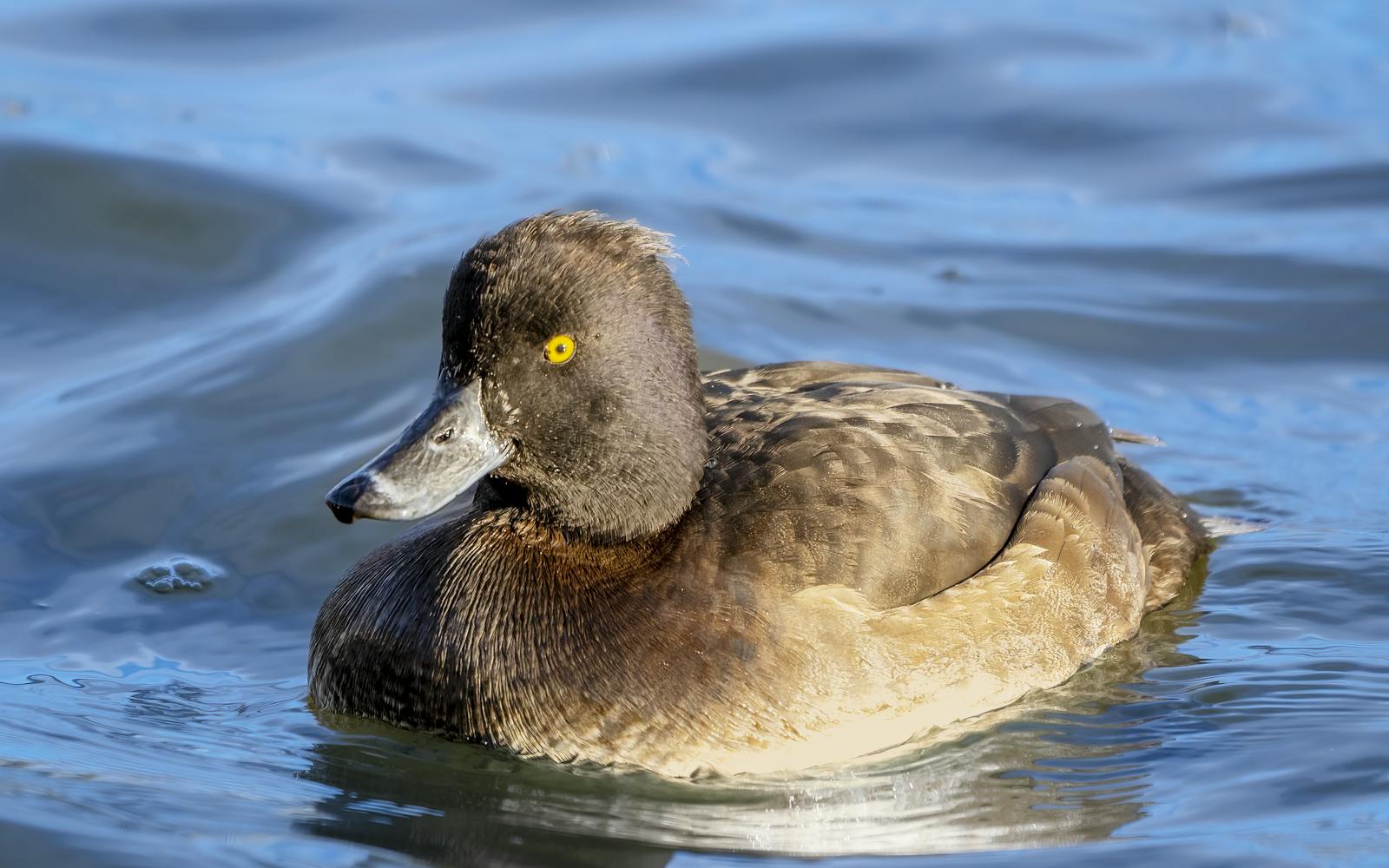
Spot the Tufted Duck in Iceland
The tufted duck (Aythya fuligula) is a waterfowl belonging to the genus Aythys, where the species dive for food and are usually called diving ducks. Diving ducks sit low on the water's surface when swimming and must run on the water when taking flight. Tufted ducks are distributed in North Eurasia all the way east to the Pacific but did not colonise Iceland until late in the 19th century.
Embark on a thrilling journey to uncover the enchanting secrets of Icelandic nature and wildlife at Reykjavík's Perlan Museum. Explore a world of exciting activities that allow you to dive into the wonders of Iceland. Designed for everyone, this unique experience brings together the beauty and nature of Iceland in one fantastic place at the Perlan Museum.
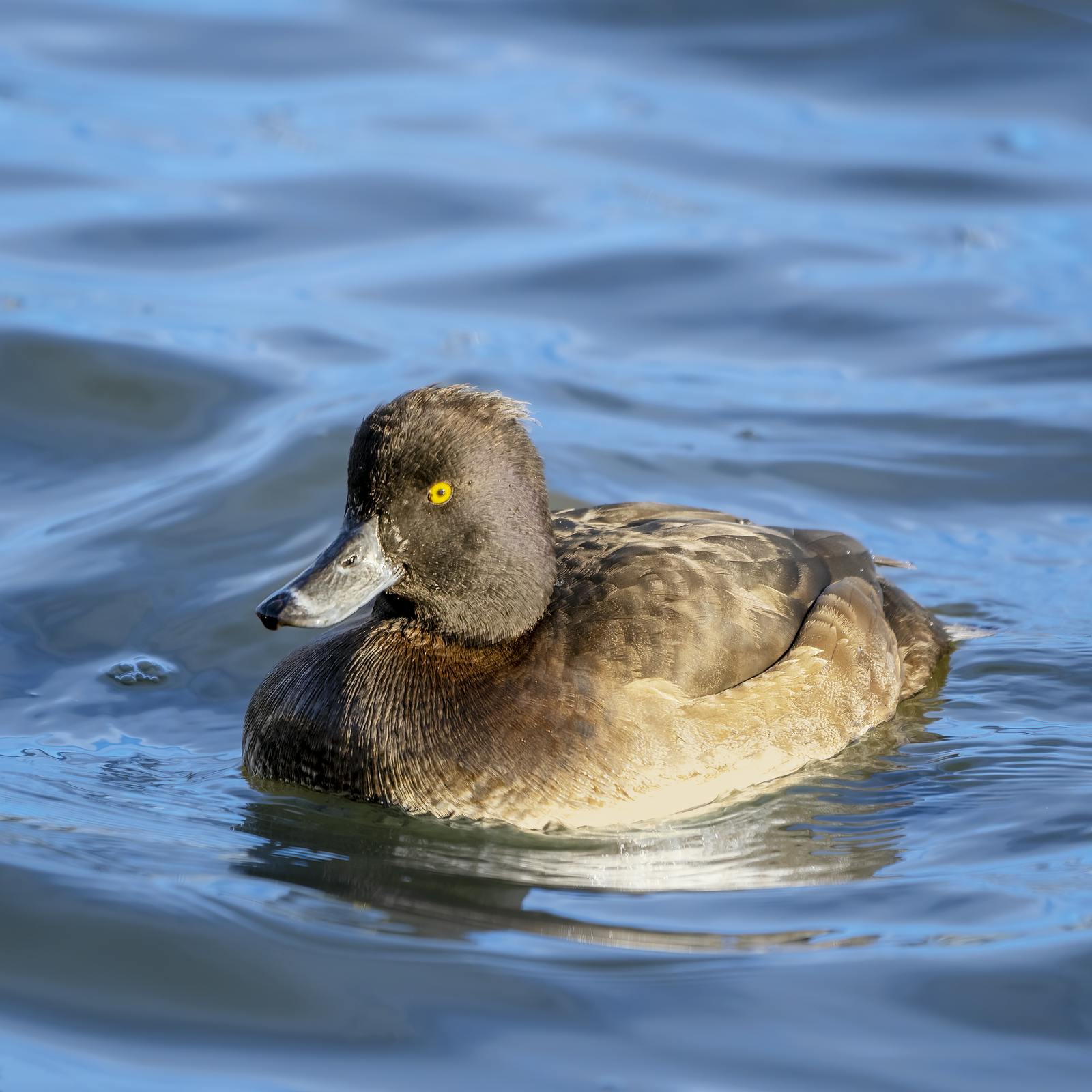
A Tufted Crest is Their Characteristics
The tufted duck is a rather small waterfowl weighing about 709 grams (25 oz). Its length is 38-48 centimetres (15-19 in), and its wingspan is 66-74 centimetres (26-29 in). Like other ducks, the tufted duck has a great difference in plumage between the sexes. The drake's back and head are black, but the chest, belly, and underwings are white. In the right light condition, a beautiful blue/greenish glow is visible on the dark head.
The male is a little larger than the female, but the weight of the birds changes drastically between seasons (16-35 oz) as anseriformes accumulate a great amount of fat reserves both in spring and autumn. The female is brownish but has white underwings. Both sexes have the characteristic tufted neck crest, which is much bigger and more spectacular on the drake. Both sexes have a blue/greyish beak. The eyes of adults are stunningly yellow but brown in juveniles.
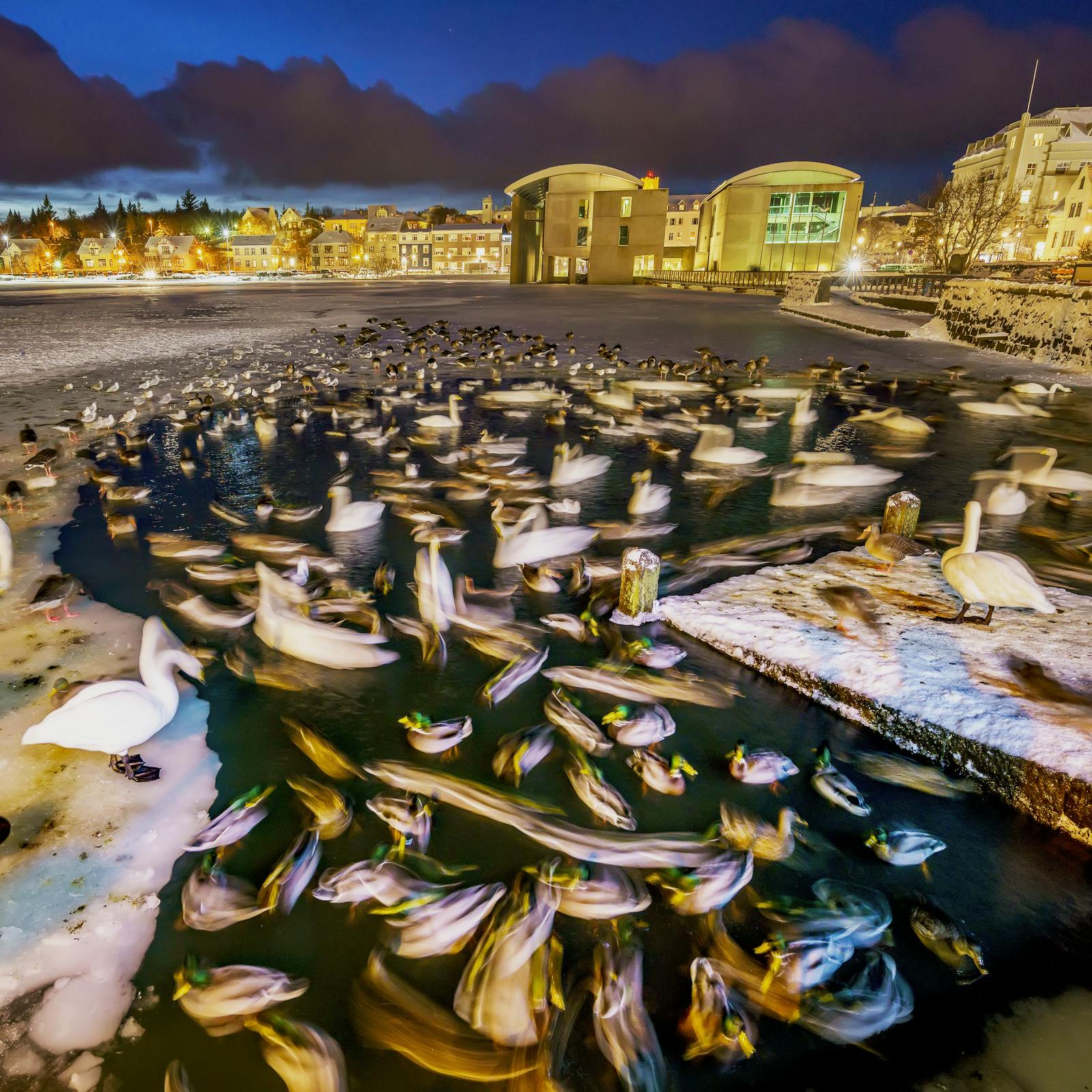
Population Size and Migratory Behaviour
The population size is estimated at 8-12 thousand breeding pairs, and more than half nests in „Mývatnssveit“ in North-East Iceland. The tufted duck is found all around the country in nutritious lakes and streams. About one thousand birds are stationary in Iceland, most of them spending the winter at „Mývatn'' and on unfrozen lakes and seashores in the southwest. The largest part of the population is migratory, heading to Ireland and Great Britain in the fall. Juveniles have been spotted in France, Spain and even south to Morocco during winter months.
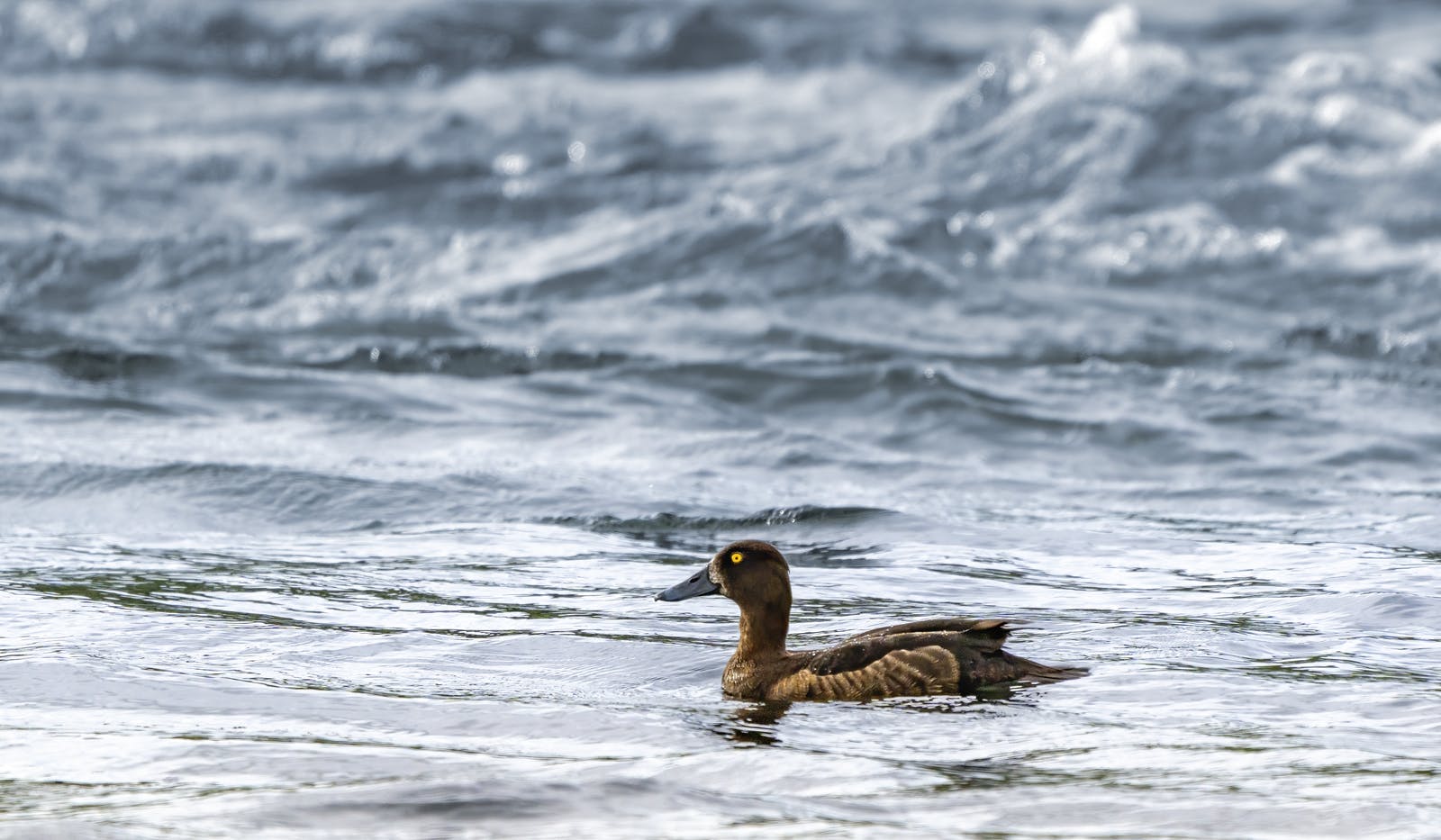
Courtship, Nesting and Raising Ducklings
Tufted ducks become sexually mature at one year old, but most do not start breeding until two years old. They pair rather late in the winter compared to other duck species, and the courtship is peaceful, with minimum conflict between rivals. Drakes show their interest in females by using courtship acts involving head movements, tail wagging, and whistle sounds.
Tufted ducks pair for a year and are loyal to their companion that particular year. The nest is well hidden in a dense cover. The colonies are often dispersed in the same area as other bird species. The nest is insulated with dry grass, down and feathers. The clutch is usually 8-12 eggs, which are olive green, weighing about 57 grams (2 oz) each. The incubation time is about 25 days. The female cares for the young for 45-50 days while they need protection and learn to fly, but the drake leaves at the start of incubation.
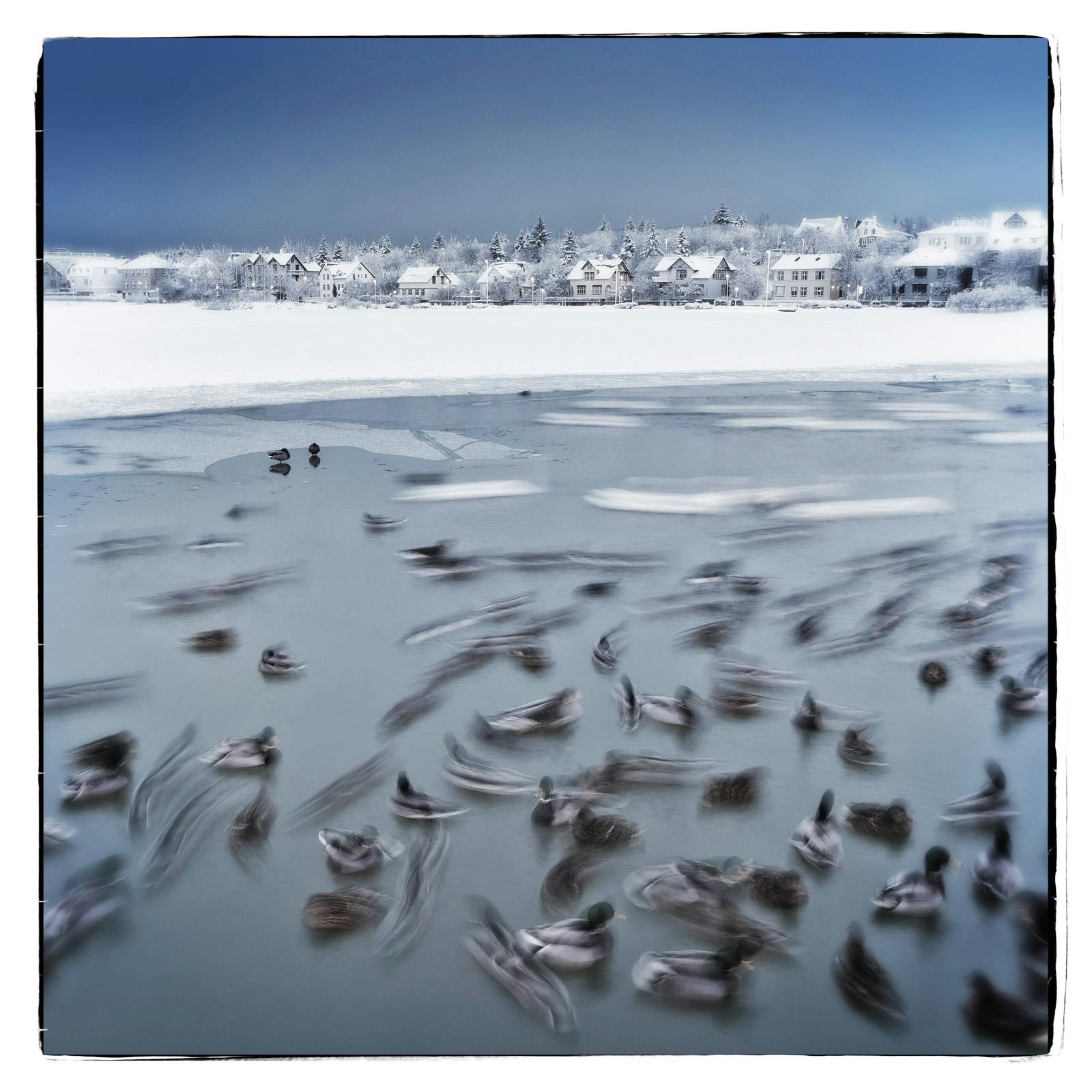
The Tufted Duck and the Scaup Look Alike
The tufted duck can be mistaken for the scaup (Aythya marila) but they are closely related and look similar. The tufted duck has even been called „little scaup“ in Iceland. Both these species have a special technique when diving as they kind of jump up from the water surface and then dive. Tufted ducks feed on small fish, crustaceans, invertebrates and bottom vegetation that they root up from the sediment.
Five Flying Facts About the Tufted Duck
- The tufted duck can dive 15 metres (50 ft) when foraging.
- The oldest known tufted duck was over 24 years old, but its average lifespan is only 4-5 years.
- About 200 tufted ducks are hunted in Iceland yearly.
- The sound of the tufted duck drake resembles a whistle, but the female has a growling sound.
- The tufted duck is the most common species of diving ducks in Iceland, excluding the eider (Somateria mollissima).







